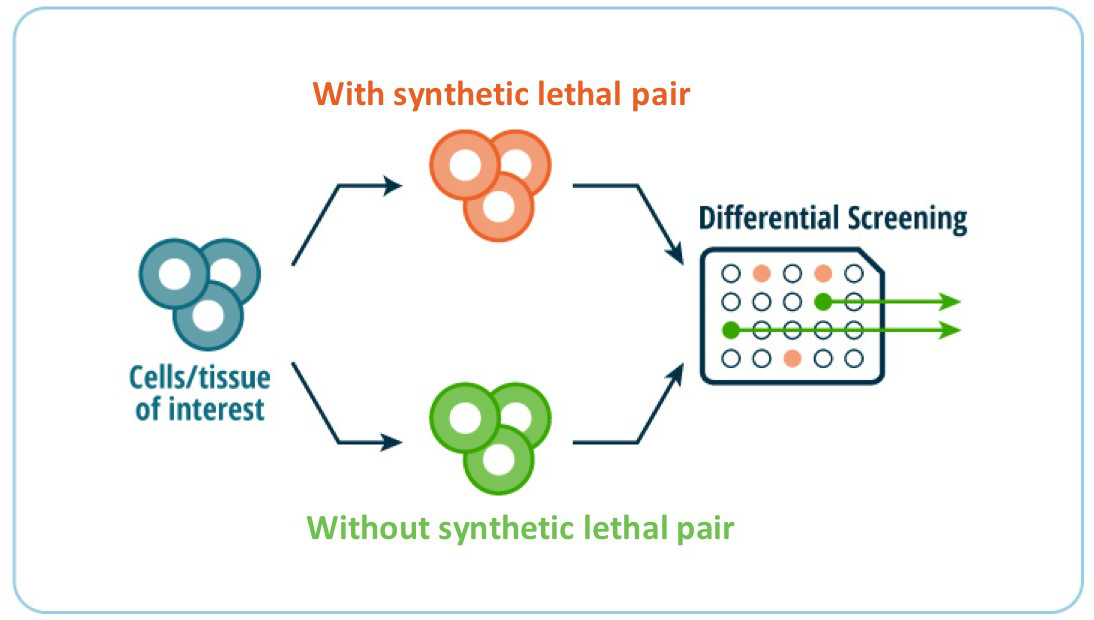Synthetic Lethality
Precision targeting of key DNA repair mechanisms is the key to synthetic lethal therapies for cancer
In contrast to other therapies which completely eliminate the target’s activity (e.g. kinase inhibitors), the key to targeting DNA repair is to partially reduce or precisely alter the activity of specific DNA repair factors. In this way, target cells with genetically defined gain-of-function abnormalities will self-destruct without harming healthy tissues. This works because cells with certain gain-of-function abnormalities experience far more DNA damage than normal cells and are thus exquisitely sensitive to small changes in DNA repair activity.
Cyteir’s scientists have been at the forefront in developing this new therapeutic strategy for targeting DNA repair. Our lead program targets RAD51, a DNA repair protein that is crucial for the survival of cells with gain-of-activity in AID, an enzyme that causes excessive DNA damage in cancer cells.

RAD51 promotes the repair of DNA double stranded breaks, stabilizes and protects replicating DNA. RAD51 has emerged as a very attractive target in a variety of diseases, including many cancers.
Cyteir has developed a unique approach to targeting RAD51. Unlike conventional therapeutic approaches that block enzymatic activities, our strategy is designed to reduce RAD51 activity in diseased cells by reducing its ability to migrate to and from sites of excessive DNA damage in diseased cells, while preserving its baseline function in normal cells.
To function properly, RAD51 must be moved from site to site within a cell, relocating from “storage depots” to sites of DNA damage. In healthy cells, very little RAD51 is needed inside the nucleus.
By contrast, diseased cells with excessive DNA damage require an influx of additional RAD51 from the cytoplasm, to facilitate the formation of numerous stable filaments on damaged DNA. By blocking its ability to stably localize to excessively damaged DNA and altering the balance of the nuclear and cytoplasmic pools of RAD51, Cyteir’s approach is to inhibit the RAD51 influx, without reducing RAD51 enzyme activity, in a way that selectively attacks diseased cells but spares healthy cells that are functioning properly.
“Groundbreaking new discoveries in the biology of DNA repair hold tremendous promise for innovative drug development.”
Kevin Mills, PhD, Co-Founder, Cyteir Therapeutics, Inc.
